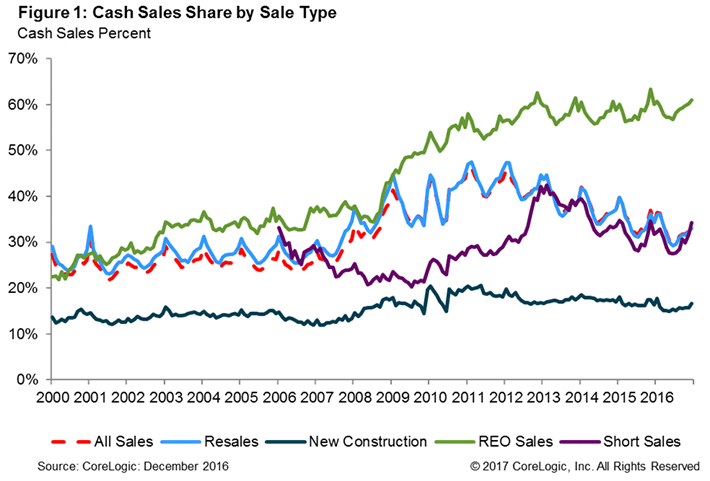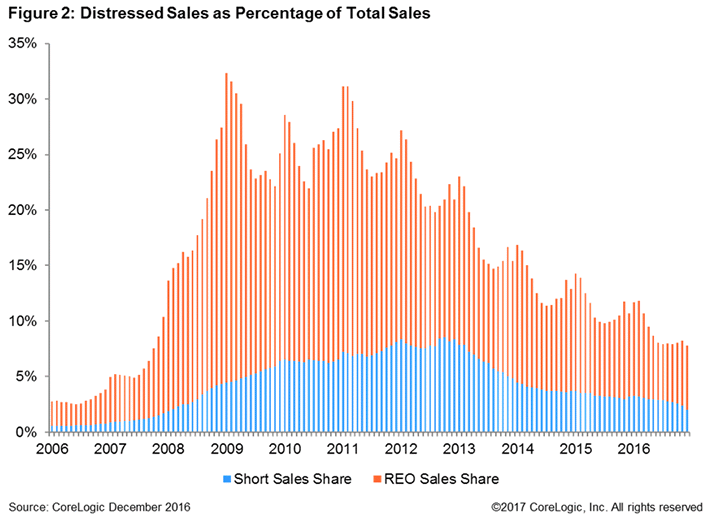The share of homes sold for cash fell to the lowest level in nearly a decade in full-year 2016. CoreLogic said that 32.1 percent of all home sales in the 12-month period ending in December closed without benefit of a mortgage. This was a decrease of 2.2 percentage points from the 2015 share. The previous low point for such sales was in 2007 when cash sales accounted for a 27 percent of sales.
CoreLogic also noted that distressed home sales, a total of both short sales and sales of lender-owned real estate (REO) accounted for 8.9 percent of all sales for the year, also the lowest share since 2007.
For the month of December, the all-cash share of sales was 33.1 percent, down 1.3 percent from that month in 2015. Cash sales peaked in January 2011 when they accounted for 46.6 percent of the national sales total. In pre-crisis days CoreLogic says cash sales averaged about 25 percent. If the decline in cash transactions continues at the current rate the 25 percent level should be achieved by mid-2019.
Figure 1 shows the national historical trend in the cash sales share by sale type. REO properties continue to have a large percentage of cash purchases, 61.1 percent, and short sales are second at 34.2 percent. Approximately a third of existing homes are bought for cash and 16.7 percent of newly constructed homes.

While the percentage of REO sales within the all-cash category remained high, REO transactions accounted for only 5.8 percent of December sales, and short sales for 2 percent, thus neither has a large impact on the cash sale numbers. The combined REO and short sales share was the lowest for distressed properties since October 2007 when the total was 6 percent.
At its peak in January 2009, distressed sales totaled 32.4 percent of all sales with REO sales representing 27.9 percent of that share. The pre-crisis share of distressed sales was traditionally about 2 percent. If the current year-over-year decrease in the distressed sales share continues, it will reach that "normal" 2-percent mark by mid-2018.

All but nine states recorded lower distressed sales shares in December 2016 compared with a year earlier. Maryland had the largest share of distressed sales of any state at 17.9 percent followed by Connecticut (17.6 percent), Michigan (15.8 percent), New Jersey (15.5 percent) and Illinois (13.6 percent). Only North Dakota, Utah and the District of Columbia have declined to within one percentage point of their pre-crisis distressed sales levels.
Cash sales were at their highest in with a 47.9 percent share. It was followed by New Jersey (47.6 percent), Alabama (46.1 percent), Michigan (44.3 percent) and Florida (42.1 percent).







